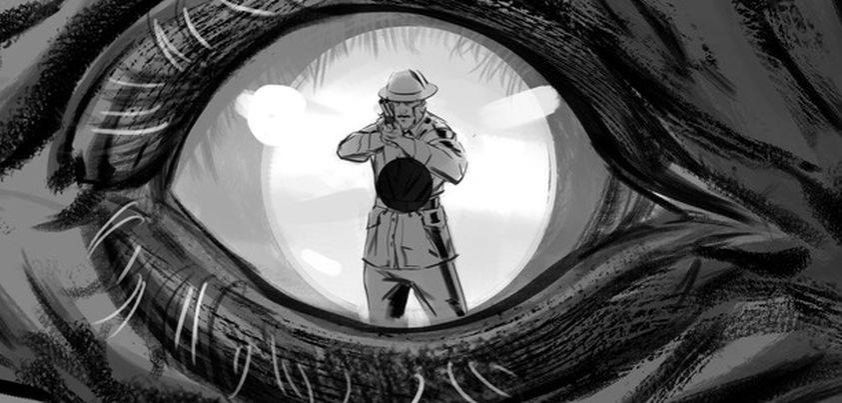 This story by Eric Arthur Blair (aka George Orwell) is a narrative essay in which the thesis is the wrongs of British Imperialism. A young officer in the British Colonial Police in the early 1920’s describes an experience with an elephant that had killed a villager. He tells how he felt pressured into shooting the animal, even though he knew this to be unnecessary. His fellow Europeans had mixed opinions but fortunately, none of them guessed the real reason for the shooting. Themes include culture clash, prejudice, the need to maintain authority, and moral conscience vs. pride/”face”.
This story by Eric Arthur Blair (aka George Orwell) is a narrative essay in which the thesis is the wrongs of British Imperialism. A young officer in the British Colonial Police in the early 1920’s describes an experience with an elephant that had killed a villager. He tells how he felt pressured into shooting the animal, even though he knew this to be unnecessary. His fellow Europeans had mixed opinions but fortunately, none of them guessed the real reason for the shooting. Themes include culture clash, prejudice, the need to maintain authority, and moral conscience vs. pride/”face”.
Original Text / PDF / Audio (3,250 words)
Orwell is generally considered to be one of the best historical recorders of early twentieth century British culture. The events in this story take place in Burma (modern day Myanmar) in a town called Moulmein. Before becoming a writer, Orwell worked for 5 years as a police officer in Burma. Because most of his time as a policeman was spent in Moulmein, some people believe that he may have been writing of a personal experience. Something that may confuse readers is that although Orwell is writing about experiences in Burma, he talks a number of times about ‘Indians’ and British rule over India. This is because Burma was part of Britain’s Indian Empire at the time.
Most good stories are built around some kind of conflict. In Shooting an Elephant, the narrator experiences three. In literary terms the first two are external conflicts because they have to do with the outside world. One is with the British Empire because of its unjust rule over Burma; the other is with the Burmese people because he thinks that they hate and continually make fun of him as a representative of the British Empire. His third and most difficult conflict is internal; it exists totally in his mind. This is the struggle he has in choosing between doing what he believes to be the right thing, and maintaining what he believes to be the correct image in front of the crowd.
A number of critics suggest that the narrator’s internal conflict is an example of peer pressure. However, nothing could be further from the truth. The policeman does not think of the Burmese people as his equals. Instead he looks down on them as being of a lower class, calling them at various points mean-minded, evil-spirited coolies and natives. At the end of the story he comments that his true peers – other younger officers in the police force – agreed with his thoughts that he should not have shot the elephant, albeit using the sad reasoning that “it was a damn shame to shoot an elephant for killing a coolie, because an elephant was worth more than any damn Indian coolie”.
In my opinion, the story is an interesting example of what people call “face”. For many years I thought that “face” was an Asian cultural concept. However, in a discussion on the issue with a university colleague from South Africa, he mentioned that the concept of “face” was also a major reason behind some of the terrible apartheid laws that existed in his country between 1948 and 1994. As I think about it, it may also have been part of the thinking behind the government sanctioned racism which existed in the United States before the Civil Rights Act of 1964. One of the messages of Shooting an Elephant is that, in a society with many social classes, people will go to great lengths to look good and not lose “face” in the eyes of those who they consider to be of a lower class… even if this requires actions against their peer group or personal beliefs about what is right and wrong.